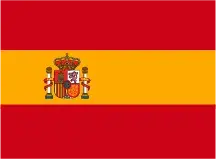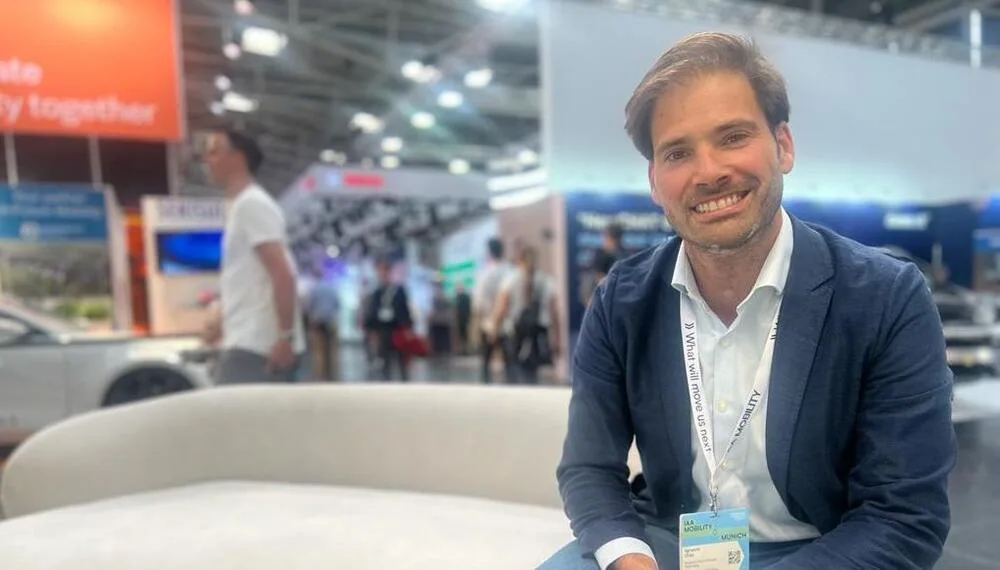Ignacio Díaz, Business Director of EV Charging at Huawei, became involved in electric mobility 15 years ago while working on university projects focused on zero-emission vehicles.
However, his journey with Huawei began just two years ago. Currently, he leads the company’s activities in Europe.
This was the reason that led Díaz to participate in the IAA Mobility event in Munich, where Portal Movilidad España had the opportunity to interview him and learn about the new projects of the company.
“We want to move towards higher power, but we face challenges because higher power requires more space,” explains the Business Director of EV Charging.
He clarifies: “So, our next portfolio is also moving towards liquid cooling charging, which will allow us to double the power quickly and in the same space, reducing charging times.”
To carry out this project, Huawei is in discussions with manufacturers to determine how to provide or manage solutions that are mutually beneficial.
It is expected that this solution will be launched by the end of this year.
“We want to go beyond typical all-in-one chargers, with two charging points and very limited power management, to move towards distributed charging systems that increase utilization,” says Díaz.
It is worth noting that last year the company launched a residential charging solution that includes 7 and 22-kilowatt AC chargers with surplus management.
Additionally, Huawei is known for providing converters for fast charging – converting from AC to DC – with its main customers being leading DC charger manufacturers in Europe.
It is also worth mentioning that the company has a “Power Unit” that can distribute 720 kilowatts in DC to a maximum of 12 charging points.
“With this frame, you can deliver up to 400 kilowatts and it follows current standards, even allowing up to 500 kilowatts with CCS2. This is what we could potentially install at a single point,” acknowledges Díaz.
He adds, “What’s interesting is that this power can be dynamically allocated based on the location’s needs or demand.”
The number of stations and the level of power to be delivered will depend on the location.
“In a supermarket in central Madrid, you probably need less power than on a highway, where you need 200 or 300 kilowatts, even 500 if you consider trucks,” exemplifies Díaz.
What are the trends according to Huawei?
Huawei’s Business Director of EV Charging, who lives in Munich and prefers electric cars over combustion cars due to their “responsiveness,” shares with Portal Movilidad España the current trends in the electric mobility market.
Firstly, Díaz acknowledges the existence of “market saturation in the AC market.”
“While it is true that it continues to grow, the fact is that in Central Europe, some markets are reaching a limit,” he explains.
The second trend he observes is the “very strong” growth in fast charging.
“There is enormous demand that, as of today, can hardly be met with the manufacturing capacity within Europe,” says Díaz.
Regarding the Spanish market specifically, the Business Director notes that there will be many more charging points, although the technology will remain the same.
“A couple of German operators have introduced stations with more than 50 DC points of over 150 kilowatts. This is where distributed architectures become more relevant. This is the upcoming trend,” he acknowledges.
Finally, Díaz indicates that, although there are no new players in the power module market, there are new players in the DC charger market from different parts of the world.
Who is Ignacio Díaz?
Díaz began his involvement in electric mobility in 2008 while working on university projects focused on the first e-tron based on the Audi A3.
“My thesis was the complete design of the engine and its thermal optimization because at that time, it was already clear that the air conditioning of a car would be a difficult issue, as an internal combustion engine generates a lot of heat and it can be reused,” recalls Díaz.
On the professional front, he started working at Siemens and even led sales activities for cars in Germany.
However, two years ago, he decided to take a different path and embark on Huawei’s projects to lead activities throughout Europe.
The fact that he speaks four languages at a professional level allows Díaz to perform his tasks from anywhere in the continent.
“What I like most about my job is the ability to drive innovation in a completely new market and the impact that decarbonization has on the automotive sector,” says Díaz to Gastón Fenés, CEO and director of Grupo Portal Movilidad.
He concludes the conversation by stating: “I prefer electric cars over combustion cars simply because of their responsiveness: they allow you to accelerate quickly and are more efficient.”








